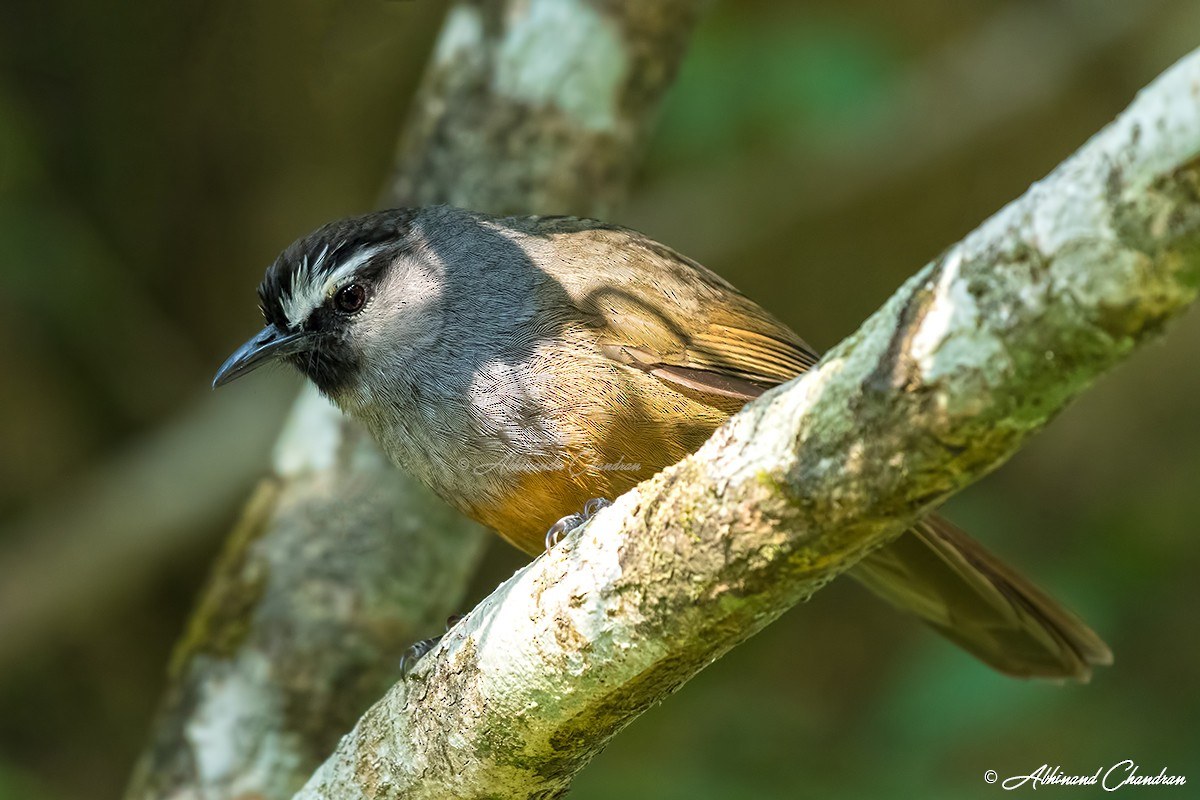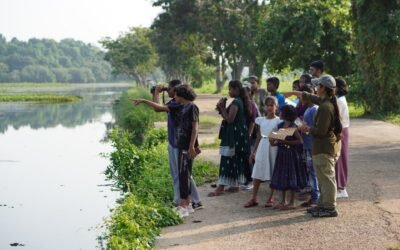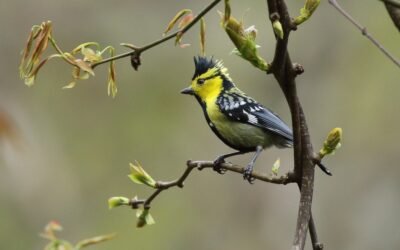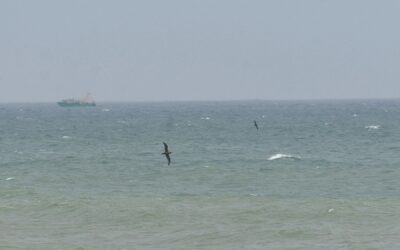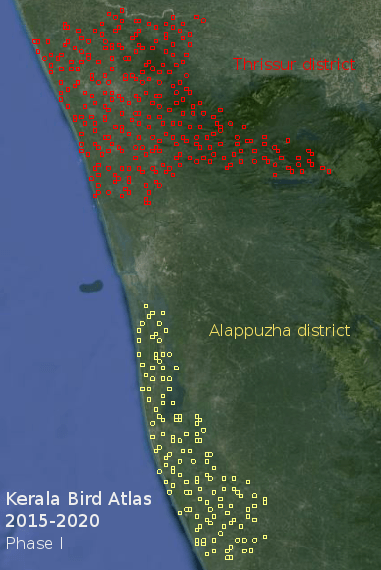
Kerala Bird Atlas, first phase (2015-2016). Squares show the grids that will be surveyed in each district.
For the first time in the India, a planned and systematic atlassing effort at the State level is getting underway. The Kerala Bird Atlas effort is expected to take 5 years to complete. Roughly one out of every ten kilometre squares will be surveyed once each in July-Sept and Jan-March. As you can imagine it is a huge effort, and it will be done district by district rather than simultaneously through the State.
In the starting year, the districts of Thrissur and Alappuzha will be covered; other districts will be surveyed in subsequent years.
You can read more details of what is planned at the Kerala Bird Atlas page.
Do join us in wishing Kerala birders all the very best in this magnificent endeavour!
Header Image: Banasura Laughingthrush (Banasura Chilappan) Montecincla jerdoni ©Abhinand C/ Macaulay Library

